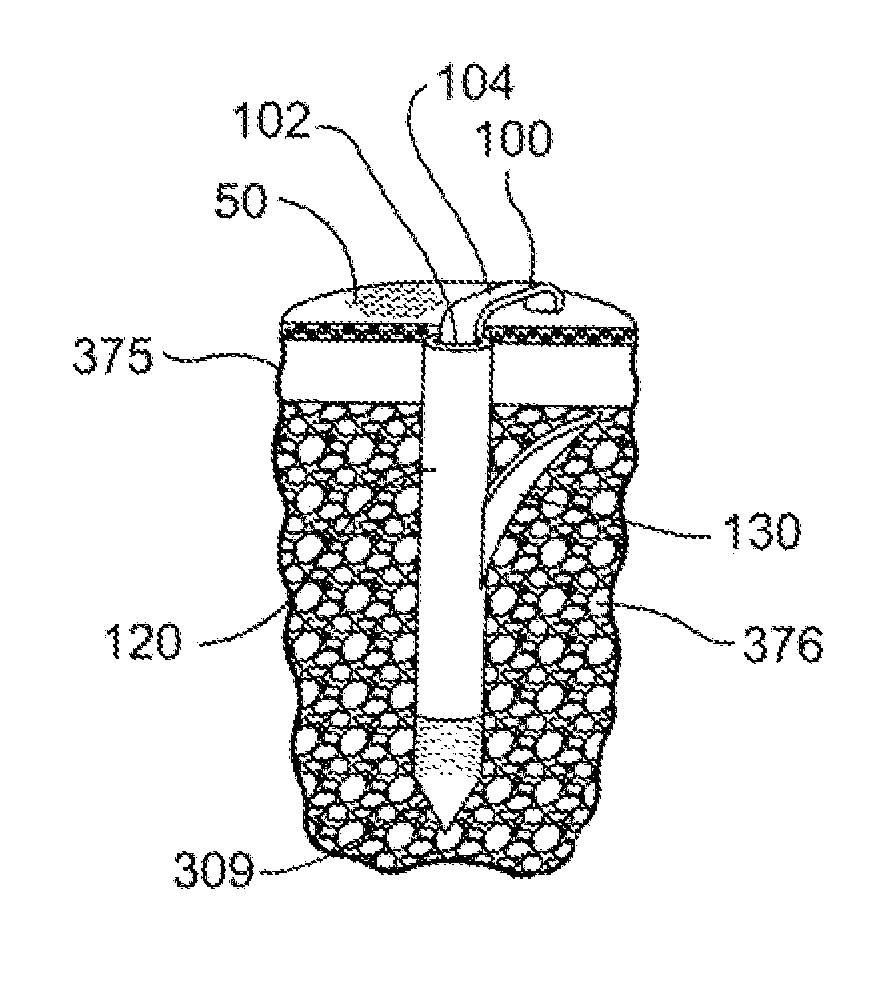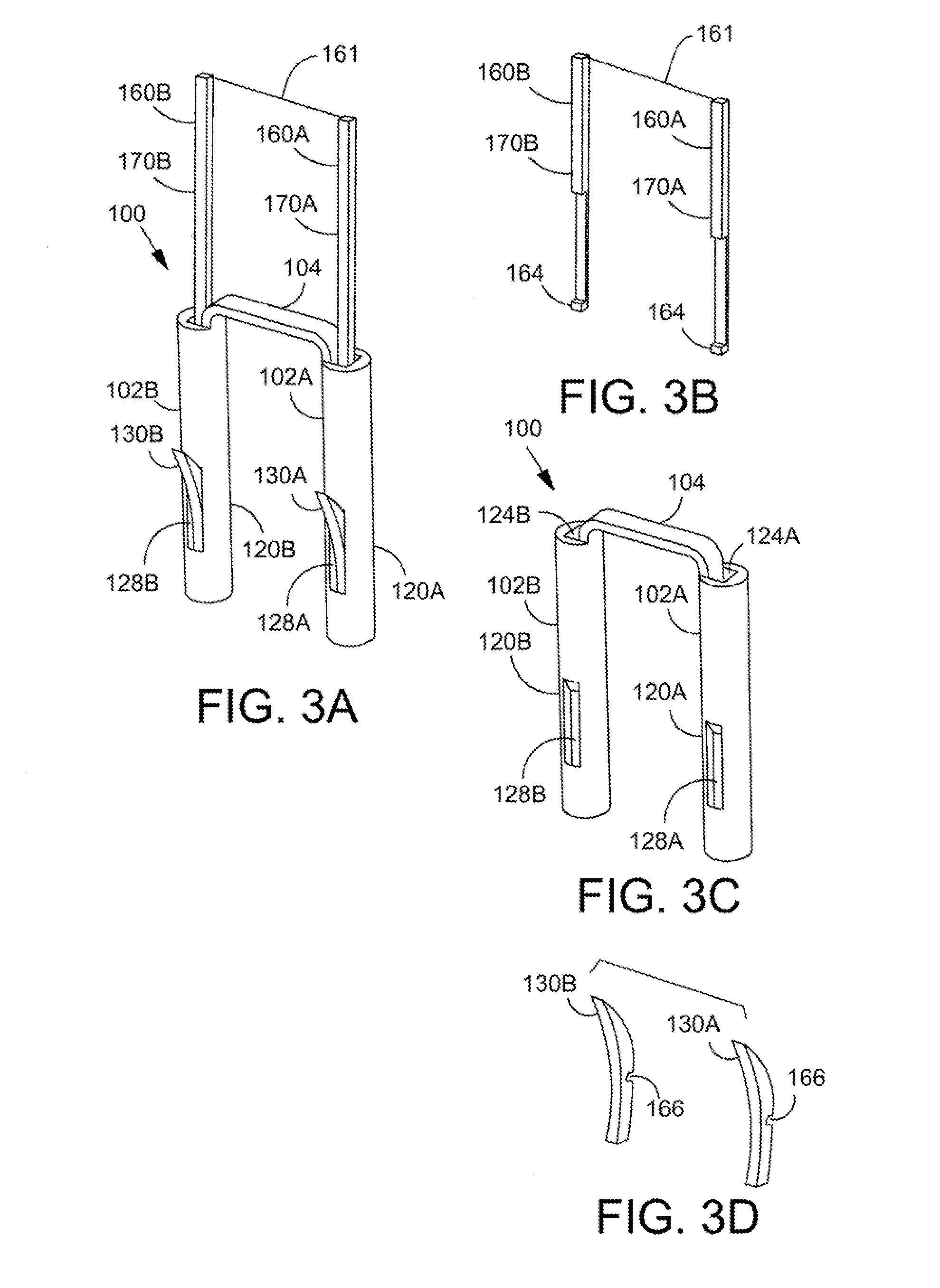Fasteners and fastener delivery devices for affixing sheet-like materials to bone or tissue
a technology of fasteners and sheets, applied in the field of orthopedic medicine and surgery, can solve the problems a potentially serious medical condition of rotator cuff damage, complex mechanical properties of the rotator cuff muscles,
- Summary
- Abstract
- Description
- Claims
- Application Information
AI Technical Summary
Benefits of technology
Problems solved by technology
Method used
Image
Examples
Embodiment Construction
[0043]The following detailed description should be read with reference to the drawings in which similar elements in different drawings are numbered the same. The drawings, which are not necessarily to scale, depict illustrative embodiments and are not intended to limit the scope of the invention.
[0044]FIG. 1 is a perspective view illustrating an exemplary staple 100 in accordance with the present detailed description. The staple is depicted deployed in bone with the bone shown in partial cross section so that features of the staple can be viewed. In particular, the staple 100 includes a bridge 104 that connects two longitudinally extending arms 102 (only one arm 102A is visible in FIG. 1). At least a portion of each arm includes a trunk 120 which may extend for the full length of the arm or only a portion of the length. If the trunk 120 extends for only a portion of the arm, then a non-trunk portion of the arm will connect the trunk to the bridge.
[0045]The staple is illustrated depl...
PUM
 Login to View More
Login to View More Abstract
Description
Claims
Application Information
 Login to View More
Login to View More - R&D
- Intellectual Property
- Life Sciences
- Materials
- Tech Scout
- Unparalleled Data Quality
- Higher Quality Content
- 60% Fewer Hallucinations
Browse by: Latest US Patents, China's latest patents, Technical Efficacy Thesaurus, Application Domain, Technology Topic, Popular Technical Reports.
© 2025 PatSnap. All rights reserved.Legal|Privacy policy|Modern Slavery Act Transparency Statement|Sitemap|About US| Contact US: help@patsnap.com



